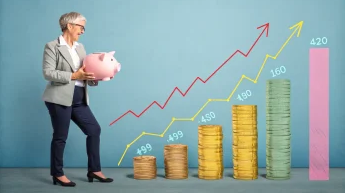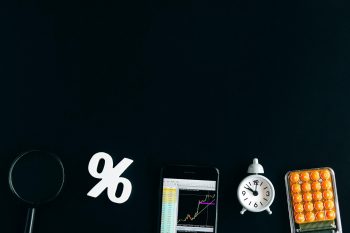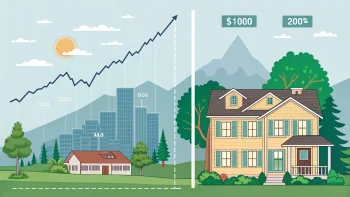Being a stock market investor, chances are high that you have already experimented with different trading strategies. While these strategies come and go, legendary traders set benchmarks with their success stories from time to time. We’re talking about Nicolas Darvas, a Hungarian man who made as much as $2,000,000 through stock trading.
Ironically, Nicolas was a dancer who used to entertain his audiences across the globe in the late 1950s. He was a part of one of the highest-paid dance teams. Behind the glamor, little did the world know that he was silently bracing himself up to emerge as a Wall Street legend.
This article will discuss his ‘Box Theory,’ a unique trading methodology he developed. Darvas multiplied his investments manifold through disciplined trading over time. Although he lived just 57 years, he made much more money than most people think.
Let’s delve into the trading philosophy of Nicolas Darvas. This article will discuss the box theory’s origin, modern-day application, and limitations.
Table of Contents
ToggleWho was Nicolas Darvas?
A Hungarian by birth, Nicolas Darvas studied economics in Budapest before fleeing the country amidst a power struggle between the Soviets and the Nazis. He embraced a dancing career with his sister and immigrated to the US.
However, when Darvas wasn’t performing, he put aside his hours to spearhead his financial literacy. He studied the stock market for hours and understood how stocks work and the risk potential. Besides, he also identified the rewarding shoes that awaited disciplined traders.
Speculating about the Canadian stock markets, Darvas started investing. The first trade fetched him a profit of over 200%. He dared to venture into troubled waters amidst the tumbling Canadian markets, which eroded his gains. Although his initial success was short-lived, Nicolas maintained his financial resilience and started trading in the New York Stock Exchange with a different trading mentality.
Darvas’ trading theory and the birth of the box strategy
As Darvas ventured into trading, he encountered similar challenges that novice traders faced. He also struggled to identify profitable stocks and incurred losses. This led him to develop his own trading philosophy, which defined the birth of the box theory or strategy.
During the 1950s, trading wasn’t as easy as in contemporary times. Investing in stocks requires a full-service broker. Most traders counted on dividend-paying stocks. Brokerage charges were high, and most investors preferred dividend-generating stocks over capital gains.
Darvas came up with a unique trading philosophy based on his techno-fundamental theory. Rather than counting on dividend-paying stocks, he introduced clearly defined stop-loss points. During his research, Darvas noticed that certain stocks had a particular type of price movement. These stocks used to undergo price consolidation at specific periods, after which they exhibited price breakouts.
He also observed that these movements in price formed patterns resembling boxes on the charts. Darvas was inspired by this observation and developed his unique trading system that revolved around those boxes. This explains why this strategy came to be known as the ‘box theory.’
Understanding the Darvas Box Theory
The Darvas Box Theory is a strategy that follows trends. This tactic involves identifying stocks with solid upward momentum and capitalizing on them. As explained, the theory revolves around the box patterns representing price angles and consolidation periods. Let’s take a look at the Darvas Box Theory in detail.
Identifying the Darvas Box
The crux of the Box Theory formulated by Nicolas Darvas involves identifying the price ranges of stocks that form the box-like pattern on the stock’s chart. There is an upper boundary in a Darvas box, known as the ceiling, and a lower boundary, referred to as the floor. When the price of the stock remains within this range, it signals consolidation. The first step of the Darvas Box theory involves identifying this box pattern in potential stocks.
Waiting for a breakout
The Box Theory states that investors should enter a trade when the stock price breaks out of the established box pattern. According to Darvas, a breakout signaled a surge in demand for the stock. Thus, chances are high that the stock price would show upward movement.
Confirming the volume
Darvas recommended investing in stocks having high volume during the breakout. While trading, he looked for a substantial increase in trading volume during the breakout. This surge in volume pointed to a strong buying interest, which eventually supported the upward momentum of the stock price.
Stop-Loss Orders
Darvas never compromised on risk management – he always placed strict stop-losses on his orders. He deployed stop-loss orders just below the lower boundary of the box. In case the price of the stock dipped below this level, the stocks would be sold off automatically. This would limit the potential losses for the investor.
Riding the uptrend with trailing stop loss
With the price of the stock consistently rising, Darvas used to trail his stop loss to secure his gains. He moved the stop-loss level above the previous box formation every time he achieved a particular risk-reward ratio. This ensures that he could capitalize on a sizable part of his gains even if the prices dropped.
The success and legacy of Nicolas Darvas
Darvas was methodical in applying his box theory, as he embraced remarkable success in stock market trading. Over time, his investments shot up as he strategically balanced both short and long-term trading. The most notable achievement of Nicolas Darvas was a modest investment of $36,000, which skyrocketed to a staggering $2.25 million in just 1.5 years.
As a successful investor, Darvas published a book titled ‘How I Made $2,000,000 in the Stock Market’. It instantly captivated aspiring traders and investors. Although some critics questioned the sustainability of his strategy, most investors found his story inspiring. They adopted the concepts of the Darvas Box Theory and incorporated them into their own trading approaches.
Limitations of the Darvas Box Theory
Most critics of the Darvas Box Theory believe that Nicolas met his success due to the bullish nature of the stock market. They also believe this strategy wouldn’t yield profits in a bearish market. Therefore, investors might incur small losses if the prices don’t work out as desired in a bear market.
However, many successful traders have adopted the trailing stop-loss strategy, as Darvas demonstrated. This approach has become a staple for most technical trading strategies today. Therefore, the trading theory partially holds good as long as traders remain disciplined with their investments.
Moreover, Darvas focused on the value of logging trades so that investors could track what went right for them and what did not later on.
How can traders apply the Darvas Box Theory today?
The original Darvas Box Theory was developed more than 70 years ago. However, its principles are still relevant in today’s dynamic markets. Investors and traders continue to use the basic concepts of the Box Theory in their strategies.
As an aspiring trader, here are some guidelines if you wish to apply the Darvas Box Theory in trading.
Use tools for technical analysis
The availability of technical analysis tools makes trading easier for today’s investors. Modern traders can easily access these tools to identify profitable stocks and track box formations. Besides, you can check out trend indicators, charting software, and scanning tools to detect potential breakouts.
Consider market conditions
Before adopting the Box Theory for trading, make sure to evaluate the market conditions. It’s wise to refrain from trading in volatile market conditions when the prices swing sideways. The reliability of breakout signals comes under question during these periods. You may also incorporate additional technical indicators and carry out fundamental analysis before finalizing your decision. As pointed out by critics, it’s wise not to use the box strategy in a bear market.
Managing investment risks
Regardless of your investment strategy, addressing the associated risks is imperative. So, make sure to use proper stop-loss at the right level while placing your order. Also, consider your personal risk tolerance and don’t overexpose yourself to loss. As pointed out by Darvas, trail your stop loss as you continue to gain in the stock market.
Continuously learn and adapt
Remember, the dynamics in financial markets keep evolving. Investors should be adaptive to new trends and technologies. It’s imperative to familiarize yourself with modern trading technologies. Follow other successful traders and learn from their strategies too.
Moreover, successful investors have tweaked the Darvas Box Theory and developed different variations. As an investor, it pays to experiment with all these variations and identify the best strategy that suits you. Consider your risk tolerance, investment capacity, and financial resilience before deploying any of these strategies.
Using the box theory in modern trading
While the Darvas Box Theory is not without its critics, the core principles of this strategy remain valid in the world of digital trading platforms and cryptocurrencies. The contemporary “support” and “resistance” theory draws its inspiration from Darvas’ Box theory. However, instead of a box, traders draw two lines known as support and resistance.
The support is a price zone that the stock can’t breach. Conversely, resistance is a prize zone that the stock stays above. The zone between these two lines is typically a “no trade zone.” Traders usually do not trade as long as the prices remain between these two lines. Once the stock exhibits a breakout from this range, along with volume, a trade is triggered.
Regardless of your trading strategy, weighing your risk profile and investing wisely is crucial. As you explore different asset classes to diversify your portfolio, consider the box theory’s core principles to develop
=-09iueerr
s
3. a realistic trading strategy.
FAQ
How can I adapt the Darvas Box trading method to today’s technology-driven market?
As a modern trader, you have access to advanced charting tools, technical analysis software, and real-time data feeds from the internet. This can help you study box formations with more efficiency. Besides, most contemporary traders use mobile trading apps to monitor prices and seamlessly execute trades. Therefore, even if you are on the go, you can incorporate the basic principles of the box trading theory into your trades.
Can I use the Darvas Box trading theory while trading cryptocurrencies?
Yes, the Darvas Box trading theory applies to cryptocurrency trading as well. As an investor, you can use charting platforms offering cryptocurrency data. Simply adjust the parameters of the Darvas Box to suit the characteristics of the specific cryptocurrency you add. Therefore, choose cryptocurrencies with a higher trading volume and liquidity. This would ensure proper breakout signals. Also, confirm the volume to identify profitable crypto trading opportunities.
Can I use the Darvas Box method in conjunction with other trading strategies or indicators?
Many traders often combine the Darvas Box trading technique with other strategies. This way, they can confirm signals, giving them more chances to succeed. Other indicators include the relative strength index (RSI) and moving averages.
What risk management techniques should I use when trading stocks?
While trading, make sure to implement strict stop-loss on your orders. Consider your risk tolerance and set up these stop-loss levels below the support line of the box. Besides, adjust the trailing stop-loss to keep your profits secure as the stock prices rise.
What is the 1% trading rule?
Per the 1% trading rule, traders must not risk more than 1% of their total account value in a single trade. For example, if you’re trading with $10,000, you can risk $100 per trade. In simple words, $100 would be your stop loss. If you follow a 1:2 risk-reward strategy, your target would be $200.
Featured Image Credit: Unsplash; Thank you!
















